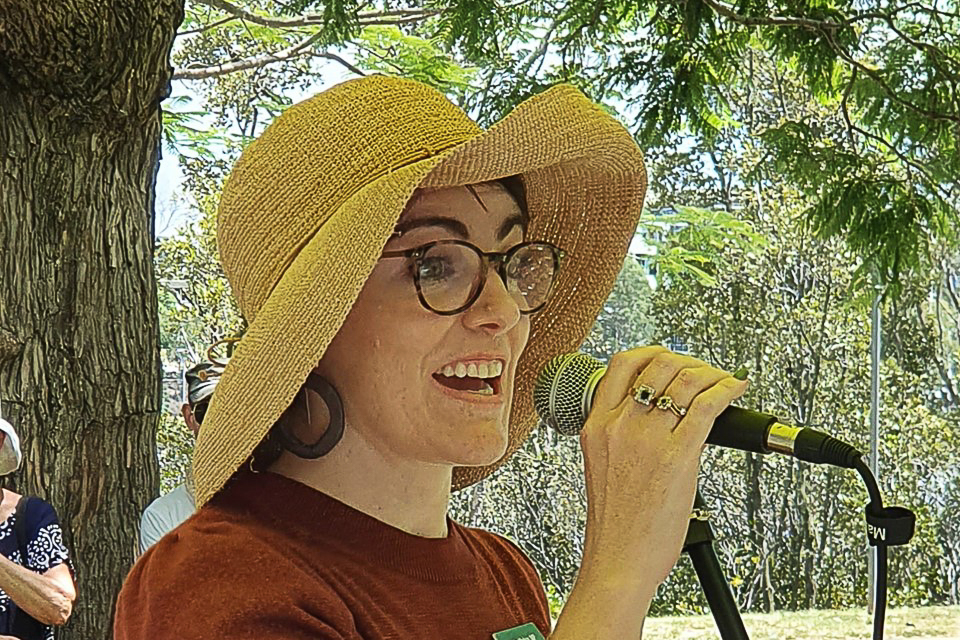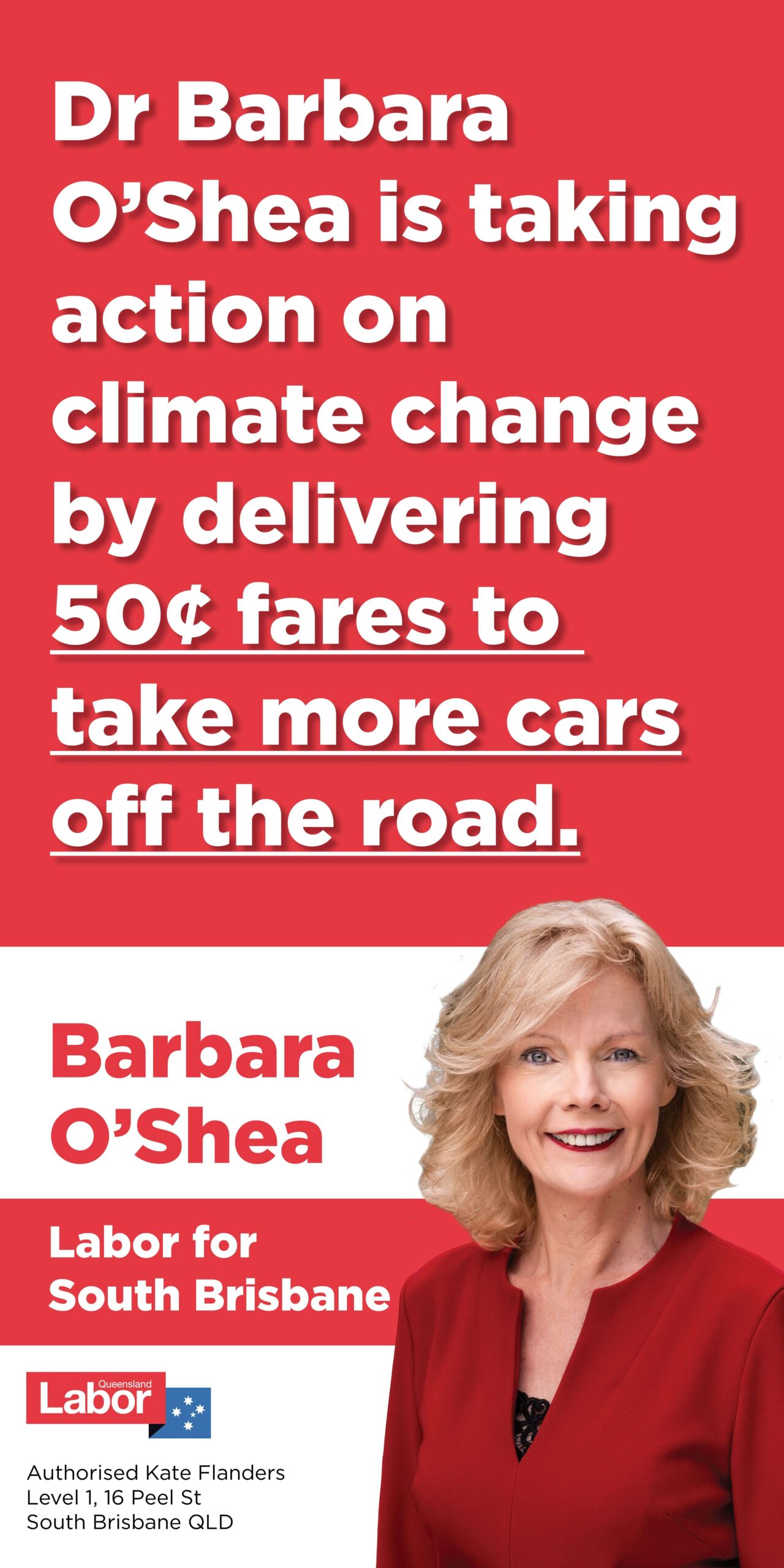We asked our local Federal, State and Council representatives to reflect on the year that was, and to tell us about their hopes for 2021
Below are responses from Amy MacMahon, State Member for South Brisbane.
2020 started with heat waves and wildfires across the country, resulting in the loss of lives, wildlife, forests, livestock, and homes. By March we were in the first of our COVID19 lockdowns. Council elections were held in March, and in October we had the State Government election. The Greens saw significant swings toward them in The Gabba Ward and in South Brisbane, where the Greens had an historic win.
Reflecting on the above, what has 2020 taught you, and how will these lessons inform your actions and priorities as the elected representative for South Brisbane in the coming year?
In 2020 we saw major social and economic upheaval, partly as a result of the COVID19 crisis. Crucially, though, many of the issues we saw emerge – homelessness, unemployment, food insecurity – were not new, but rather brought to the surface by the sudden health crisis. In Queensland, we now have over 47,000 people waiting for public housing (a 25% increase from the previous year), and a ballooning of people in the ‘high need’ category over the year. We are seeming coal and gas expansion, while Queensland families are still dealing with the fallout from the 2019/20 bushfire season. As unemployment rises, thousands of families are relying on support from foodbanks – locally, organisations like Community Friends, West End Community House and Hope St Café have been a lifeline. It has been a reminder that Queensland, and our community, are facing a range of systemic issues that successive governments, both state and federal, have failed to address.
Major upheavals often provide opportunities for a reset. What opportunities do you think we have in Australia to reset our social and political directions?
We’re heading into a ‘recovery’ phase after COVID. This is an opportunity for the government to be investing heavily in jobs and infrastructure that are not only going to help Queensland recover from the crisis, but build back stronger. I’m advocating for building at least 100,000 public homes, which would not only provide homes for Queenslanders, but create thousands of good secure jobs. We have an opportunity to be building 100% publicly-owned clean energy, providing jobs, cheap, secure energy, and a stable source of energy for generations to come. We also have an opportunity to be expanding our healthcare system, and ensuring that we have genuinely free, accessible healthcare in Queensland. We’ve been advocating for 9,500 new doctors and nurses, 200 new free GP clinics, and things like free hospital parking that would bring down the barriers to people accessing healthcare, particularly given we’ve seen how crucial access to public healthcare really is.
Are you hopeful about our future? If so, what makes you hopeful?
The sparks of solidarity in our community give me hope. Just a few weeks ago, three men were released from the Kangaroo Point detention centre – in the absence of state or federal support for these men, the community fundraised thousands of dollars to cover rent and essentials. Thousands of people came out on invasion day, demanding justice, land rights and reparations for First Nations people. Up in Gympie, the community are mobilising to protect the Djaki Kundu sacred site, at risk of being demolished for the Bruce Highway expansion. Community groups across South Brisbane are organising against unsustainable developments. This kind of collective action gives me a lot of hope! My family has also just welcomed a new baby niece. Fighting for a future for her gives me a lot of hope, and drive.
What are the most significant challenges facing the electorate of South Brisbane in the coming year? Do these differ in any way from the challenges facing the broader Australian community?
South Brisbane is facing many of the issues that broader Australia are facing, particularly around the cost of living, transport and access to essential services. Some of the key challenges facing our community are:
Unsustainable development: Our community is pushing back against an unsustainable planning system set up by both the council and state government. Our already congested roads, and limited greenspace, will be even more pressured with new developments being approved. Overhauling the planning act is a key challenge.
Housing affordability: Both renters, and people with mortgages, have been struggling over the past 12 months, and while 47,000 people are waiting for public housing, the issue of housing is critical. We’re pushing for the government to step up and build at least 100,000 public homes, which would not only provide homes for the Queenslaners who need them, but also create hundreds of jobs.
The cost of living: This includes the cost of transport, healthcare and education. Families are paying hundreds of dollars at the start of every school year, and while for some this might not be much, for others, this will be a huge chunk out of a monthly budget. Making essential services like healthcare and education truly free – with things like free public transport, and getting rid of school fees – would be a huge weight off hundreds of South Brisbane families.
Transport: With more and more people moving to our neighbourhood, we’re seeing the pressure on our limited public infrastructure. We desperately need more buses, and new bus routes that can get people between neighbourhoods. We also need cycle infrastructure that can connect our suburbs, including along Vulture St, and a new ferry terminal.
Cross River Rail stations: Our community are so excited about much-needed public transport options, but what happens with the public land above the stations is an on-going concern. It is crucial that public land stays in public hands, and is directed toward community need – things like greenspace, affordable housing, and community venues.
How do you see your role in supporting and representing the hopes and concerns of your community in 2021?
Our political system is intentionally hard to navigate, and politicians have become really disconnected from the lives of everyday people, particularly when corporate donations and lobbyists are involved. I’m here to fight for the community, and make sure the needs and concerns of our community are being heard loud and clear inside and outside of parliament. I’m also here to support community members, groups and organisations pushing for change on the ground – we’ve been helping with grants support, printing materials, loaning equipment, promotion, accessing information, letters of support, and mobilising against unsustainable developments.
I’ve also been putting time into meeting as many community members as I can – Jonathan Sri and I are hosting a meet and greet this Saturday, 6th February, at 10am, in Raymond Park. And if you have any questions, or issues you’d like support with, get in touch at south.brisbane@parliament.qld.gov.au
What are five key issues or reasons residents contact your office? How have you been able to the represent their concerns?
People have been contacting us about unsustainable development (such as the Montague Rd tower proposal), issues with access to affordable housing, community groups struggling to meet the scale of need in the midst of an unemployment crisis, as well as advocacy around climate action, public transport and refugee rights. While some of these issues are small scale, and can be solved with a phone call or email to the right person, many of these issues are part of longer-term campaigns and advocacy. So we’ve been doing things like printing campaign fliers for community groups, supporting community events (such as the BBQ on invasion day), and speaking to the media about urgent issues. I’ve also been raising issues in parliament (see my question to the transport minister regarding Montague Rd here) and writing to Ministers to ensure that South Brisbane’s concerns are on the table.
You can read Terri Butler’s response here:
“Climate action is needed now”: Terri Butler reflects on the year that was and on her hopes for 2021
Feature Image by Jan Bowman


